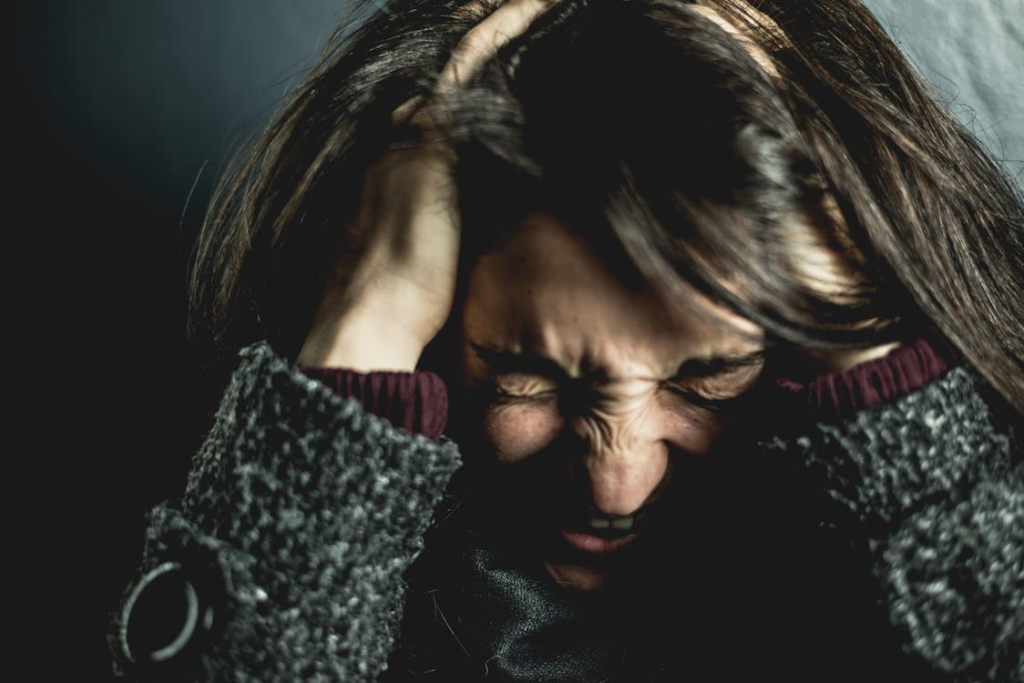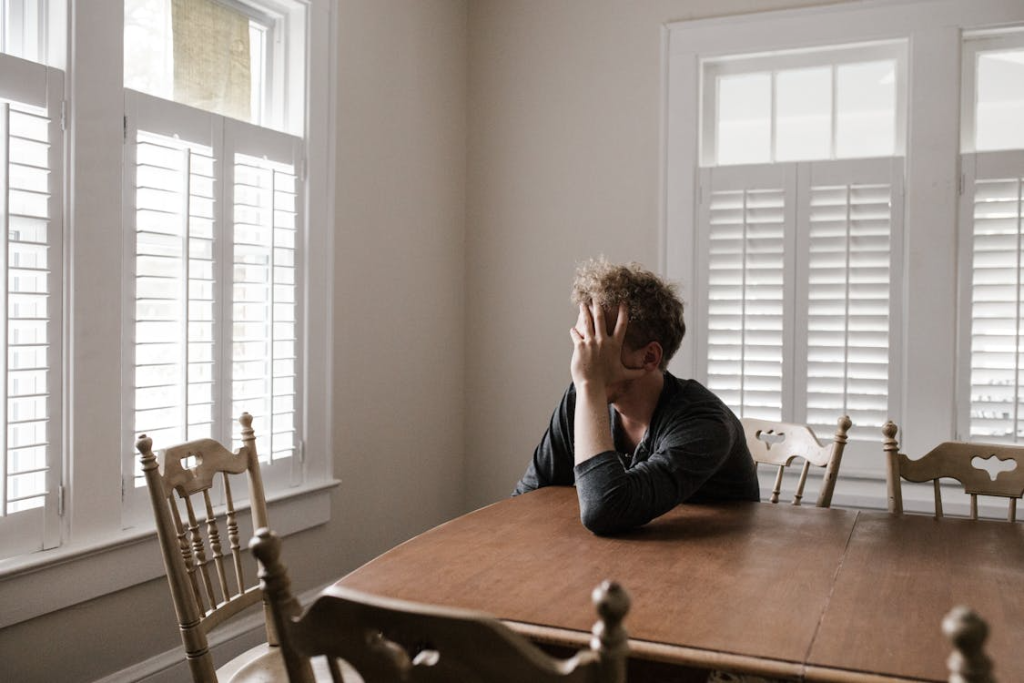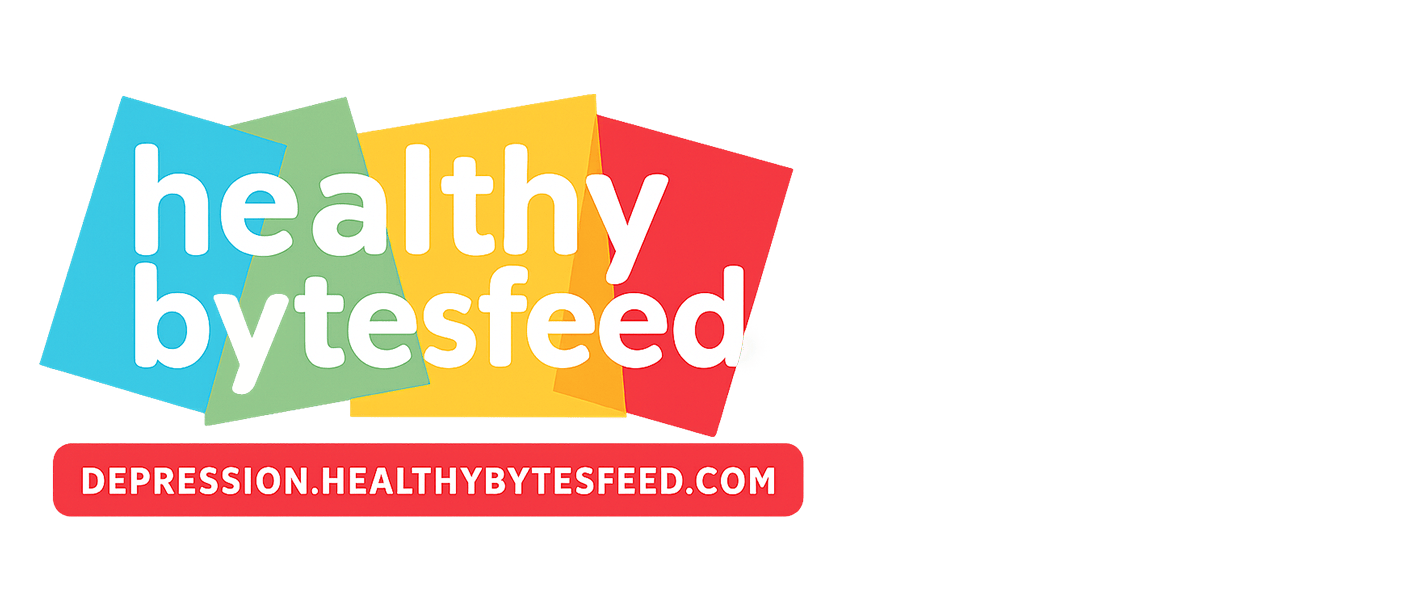- 1、Let’s Start with Daily Scenes: Have You Ever Had These “Anxious Moments”?
- 2、Core Science: What Exactly Is Anxiety? First, Tell Normal Anxiety from Problematic Anxiety
- 3、What Signals Does Anxiety Send—Physically and Mentally?
- 4、Practical Tips: 3 Easy Daily Ways to Ease Mild Anxiety
- 5、Important Reminder: When Should You Seek Professional Help?
- 6、Disclaimer
- 7、References
Let’s Start with Daily Scenes: Have You Ever Had These “Anxious Moments”?
It’s Monday morning—you set three alarms but still nearly miss work, and you can’t shake the feeling “something will go wrong today” while rushing to the subway. Your child takes their first solo trip to school, so you feel the urge to text them every hour to ask “Did you run into trouble?” You see a “mildly abnormal” result on your medical checkup report, then spend hours searching for related symptoms online, growing more convinced “I might have a serious illness”…
These moments of restlessness, unease, and overthinking all tie back to “anxiety.” Many people think “anxiety is bad,” but in reality, it’s an evolutionary “protective mechanism”—just as our ancient ancestors grew alert when facing wild animals, our bodies automatically trigger anxiety when we encounter stress or risk, reminding us to “stay cautious and prepare.” For example, moderate anxiety before an exam pushes you to study harder; nervousness before a speech helps you focus on preparation. These are the positive roles of “normal anxiety.”
However, when anxiety goes beyond “moderation”—like losing sleep for days over one late arrival, avoiding going out because of a mild medical abnormality, or letting it disrupt your eating and work—it may become “anxiety that requires attention.” According to 2023 data from the National Institute of Mental Health (NIMH), approximately 18% of adults worldwide experienced “anxiety beyond the normal range” in the past year, yet nearly 60% of them didn’t know “anxiety can be eased with adjustments”[1]. A survey by Ding Xiang Doctor (a leading health platform in China) also found that 72% of people “can’t tell the difference between normal anxiety and problematic anxiety”—some mistake normal anxiety for “being mentally weak,” while others dismiss severe anxiety as “just stress”[2].

Image Source: Pexels, Author: David Garrison
Core Science: What Exactly Is Anxiety? First, Tell Normal Anxiety from Problematic Anxiety
To understand anxiety, we first need to clarify: anxiety is not synonymous with “mental illness”—it’s a common emotional response, just like happiness or sadness. The key difference is that anxiety focuses more on “worry about future risks.” We can distinguish between normal and problematic anxiety using three dimensions:
1.Check the “Trigger”: Is There a Clear, Short-Term Stressor?
Normal anxiety usually has a “specific, short-term cause”—like an exam tomorrow, a speech next week, or an important project to finish. Once the stressor is gone, the anxiety eases. For example, if you feel nervous about “submitting a work report by the end of the month,” that nervousness fades quickly after you turn in the report—that’s normal anxiety.
Problematic anxiety, by contrast, often has “vague or exaggerated triggers”—you might feel “something bad will happen” without a specific reason, or fixate on a small incident (like a colleague not greeting you) and worry “Did I offend them? Will they exclude me later?” to the point of distracting you from work for days. The Anxiety and Depression Association of America (ADAA) notes that if this “anxiety with no clear trigger or exaggerated focus” lasts more than 2 weeks, it’s worth paying attention to[3].
2.Check the “Impact”: Does It Disrupt Daily Life?
Normal anxiety doesn’t interfere with basic daily activities—you might feel nervous before an exam, but you can still study, eat, and sleep normally; you might feel nervous before a speech, but you still show up on time and deliver it. It acts more like “motivation” to help you take things seriously.
Problematic anxiety, however, “breaks your daily routine”—you might skip work by pretending to be sick because you’re worried “something bad will happen if I go out,” or refuse necessary social events because you’re afraid “to talk to strangers.” In severe cases, anxiety can cause insomnia or loss of appetite, leaving you only able to manage basic tasks like washing up and eating. NIMH research shows that when anxiety makes you “give up things you used to do,” it has gone beyond the “normal range”[1].
3.Check the “Duration”: Is It “Short-Term Fluctuation” or “Long-Term Presence”?
Normal anxiety lasts only as long as the stressor—you might feel anxious for 1-2 weeks before an exam, but it fades once the exam ends; the tension eases after you finish an urgent project, and it won’t “linger.”
Problematic anxiety, though, “lasts a long time and may spread”—you might start by worrying “about making mistakes at work,” then gradually worry about “your health” or “your family’s safety.” Even without new stress, you feel “restless and uneasy” every day, for months or longer. A case from Ding Xiang Doctor describes a professional who developed anxiety after a project mistake: over six months, they not only grew afraid of work but also constantly worried “I’ll get sick” or “something will happen to my family,” eventually seeking help because of “long-term insomnia”[2].
What Signals Does Anxiety Send—Physically and Mentally?
When anxiety strikes, your body and mind send signals—these are your body’s way of reminding you “it’s time to check in with yourself”:
1.Physical Signals: Your Body Reacts Before Your Mind
Anxiety affects your body first—when you feel uneasy, your brain releases “stress hormones” (like cortisol), triggering a range of physical responses:
Common reactions: A faster heart rate (e.g., from a normal resting rate of 60 beats per minute to 90 when anxious), sweaty palms, a tight throat, and easy fatigue;
Easy-to-miss reactions: Insomnia (e.g., taking 1-2 hours to fall asleep or waking up early), changes in appetite (either losing your appetite or overeating snacks), headaches, and stomach discomfort (e.g., needing to use the bathroom when nervous).
These physical reactions aren’t “you faking illness”—they’re natural stress responses. For example, many people’s “hands shake or voice trembles” before a speech—this is muscle tension caused by stress hormones, and it’s completely normal. You don’t need to think “I’m useless” because of it.
3.Mental Signals: Overthinking and “Catastrophic Thinking”
Mentally, anxiety traps you in “overthinking”:
Fixating on “bad outcomes”: Before a party, you might think nonstop “What if no one talks to me?” or “What if I say something embarrassing?”;
Difficulty concentrating: At work, you try to focus, but your mind keeps wandering to “unfinished tasks” or “possible problems,” leaving you unable to finish even small tasks;
Irritability: You might have a good temper normally, but anxiety makes you snap at “small things” (like a late delivery or a family member speaking loudly)—only to regret it later.
These signals are your brain’s way of “overprotecting” you—it tries to help you avoid trouble by “anticipating all risks,” but it ends up making you tired.
Practical Tips: 3 Easy Daily Ways to Ease Mild Anxiety
If you notice you’re in a “mildly anxious” state (e.g., clear trigger, no disruption to daily life, short duration), try these 3 simple methods—no medication needed, and you can do them at home:
1.The “5-Minute Breathing Exercise”: Calm Your Body Quickly
When anxious, your body is in a “tense state,” and your breathing becomes shallow and fast. Slow, deep breathing activates your body’s “relaxation response.” Here’s how to do it:
Sit or lie down in a quiet place, and place your hands on your stomach;
Inhale slowly through your nose for 4 seconds (count “1-2-3-4”)—feel your stomach rise;
Hold your breath for 2 seconds, then exhale slowly through your mouth for 6 seconds (count “1-2-3-4-5-6”)—feel your stomach fall;
Repeat 5 times. You’ll notice your heart rate slow down and your tension ease.
This is an “emergency relief method” recommended by NIMH—it’s perfect for when anxiety hits suddenly, like before an exam, speech, or meeting[1].
2.The “Anxiety List”: Turn “Overthinking” into “Specific Problems”
When anxious, your thoughts are often “vague and messy”—you might think “something bad will happen,” and the more you think, the more scared you get. Grab a piece of paper and write down two things:
What am I specifically worried about? (e.g., “I’m worried I’ll mess up my presentation tomorrow” or “I’m worried my family will be in danger when they go out”);
How likely is this worry to come true? (e.g., “What’s the chance I’ll mess up the presentation? Have I ever given a successful one before?” or “What’s the chance my family will encounter danger?”).
Turning vague anxiety into “specific questions + probability checks” helps you realize “many worries are just me scaring myself.” For example, a mother worried “her child would be bullied at school” wrote down her list and realized “her child has friends at school and teachers pay attention—so the risk of bullying is low”—her anxiety eased immediately[2].
3.The “Action Distraction”: Break the Anxiety Cycle with Small Tasks
When anxious, your brain gets “stuck in negative thoughts.” The most effective way to break this is to “do small, concrete things”—shift your focus from “thinking” to “doing”:
At home: If you’re anxious, wash dishes, wipe the table, or organize your closet—these “mindless physical tasks” distract you quickly;
Outdoors: If you’re anxious while out, observe your surroundings—notice “what the weather is like,” “what the trees look like,” or “what color clothes the person in front is wearing”—use “focusing on the present” to stop “worrying about the future.”
ADAA research shows that “action distraction” can reduce anxiety levels in 10-15 minutes, as it shifts your brain from “stress mode” to “normal working mode”[3].

Important Reminder: When Should You Seek Professional Help?
If you’ve tried the methods above but your anxiety persists, and you notice any of the following, it’s time to talk to a psychiatrist or counselor:
Your anxiety lasts more than 1 month, and you feel “restless and uneasy” every day, disrupting your sleep, eating, or work;
Anxiety makes you have “thoughts of harming yourself,” or you turn to “drinking or staying up late” to escape;
People around you notice obvious changes in your state—e.g., “you’ve become much more irritable,” “you hardly talk anymore,” or “you rarely go out.”
It’s important to emphasize that “seeking professional help” is not “having a mental illness”—it’s as normal as seeing a doctor for a cold. NIMH data shows that with professional intervention, 80% of anxiety states can be effectively relieved[1]; platforms like Ding Xiang Doctor in China also offer affordable counseling resources for ordinary people[2].
Disclaimer
1.Statement on Link Accuracy: The external source links cited in this article (see “References” below) were accessible and valid at the time of content creation. However, we do not guarantee the subsequent accuracy, completeness, timeliness, or availability of the linked content. The update, modification, and maintenance of linked content are the sole responsibility of the original copyright holders of the respective sources. The author of this article shall not be liable for any subsequent changes to the linked content.
2.Disclaimer on Medical Advice: The content of this article is solely for basic educational purposes about anxiety. It does not constitute any medical diagnosis, disease treatment recommendation, medication guidance, or health intervention advice. If you or someone around you experiences persistent anxiety or suspected related symptoms, do not self-judge, adjust behaviors, or handle the situation based on this article. Instead, promptly consult a formal medical institution, a qualified psychiatrist, or a counselor to obtain personalized medical or psychological support—avoiding delays in resolving health issues due to self-management.
3.Statement on Copyright Compliance: The text content from the official websites of NIMH and ADAA used in this article strictly adheres to their copyright policies (NIMH allows free commercial use of non-image content; ADAA public reports may be cited); content from Ding Xiang Doctor is sourced from publicly available materials clearly marked “free for educational reprint.” No misleading modifications have been made, no image materials from any source have been used, and no medications, health products, or related products have been recommended to users through this article—complying with copyright requirements.
References
[1] National Institute of Mental Health (NIMH). (2023). Basic Guide to Anxiety & Content on “Anxiety Emotions and Anxiety Disorders”. Retrieved from https://www.nimh.nih.gov/health/topics/anxiety-disorders
[2] Ding Xiang Doctor. (2023). How Can Ordinary People Tell the Difference Between Normal Anxiety and Problematic Anxiety? & 3 Daily Methods to Ease Mild Anxiety. Retrieved from https://dxy.com/article/614567; https://dxy.com/article/615678
[3] Anxiety and Depression Association of America (ADAA). (2023). Daily Guide to Easing Anxiety & Content on “Self-Recognition of Anxiety”. Retrieved from https://adaa.org/understanding-anxiety/everyday-tools







Discuss